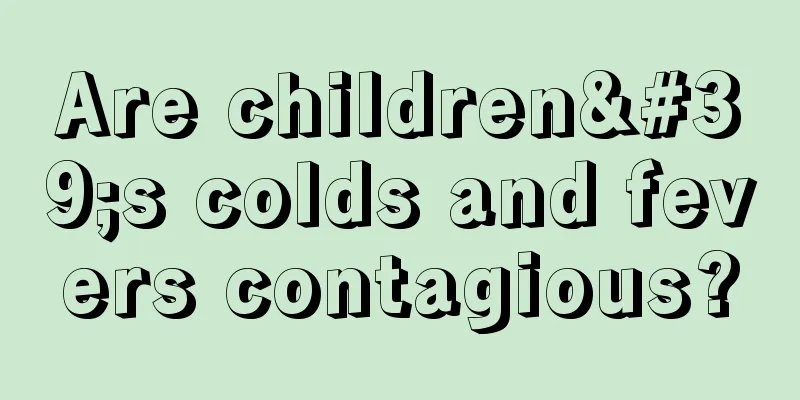What are the dangers of hitting the fontanelle on the baby's head?

|
Because the fontanelle of a newborn has not yet closed, it is very fragile and very prone to danger. At this time, you must pay special attention to protecting the baby's fontanelle. Sometimes it may be accidentally touched. As long as the baby has no abnormalities, it will be fine. But you still need to pay attention to it at ordinary times. When bathing the baby, be sure to rub the head gently and the water temperature should not be too hot.
Generally, newborns have two fontanelles, called the static fontanelle and the posterior fontanelle, sometimes referred to as the anterior fontanelle and the posterior fontanelle. The static fontanelle is located in the front part of the top of the head, specifically at the junction of the anterior superior corners of the parietal bone and the frontal bone on both sides of the head. It will generally tilt 2.5 cm after birth and close between 1 and 1.5 years old. The posterior fontanelle is located at the back of the top of the head, at the junction of the parietal bone and the occipital bone. It is generally very small or has been closed at birth. If it has not closed at that time, it will close at the latest 2 to 4 months after birth.
Generally, whether the fontanelle is closed or how early it closes is a reflection of the development of the newborn's skull. If the fontanelle closes too early or too late, it can be regarded as an abnormality in the newborn's growth and development. However, these two situations need to be treated separately. The baby's fontanelle can usually be closed 12 to 18 months after birth. If it is closed before 6 months, the baby sometimes has incomplete brain development; if it does not close after 18 months, it is easy to cause rickets, hydrocephalus or cretinism. If this happens, be sure to go to the hospital for examination as soon as possible.
Because many of them are new mothers, it is crucial to pay attention to the care of the newborn's fontanelle. Because the fontanelle of a newborn is relatively soft and has no skull to protect it, it requires special protection during care to avoid brain damage. Newborns can be washed after a period of time, but not casually. The movements must be slow and gentle, and you cannot scratch and scratch like adults when washing their hair. When washing your hair, do not use water that is too hot; warm water is enough. Your baby's skin is delicate, so do not use irritating soaps. Some babies may have some yellow-brown greasy scales on the front of their scalp. You should first apply some vegetable oil on them with sterilized cotton and then wipe them off after they soften. Be gentle during the whole process. |
<<: Baby often sticks out tongue
>>: The harm of ceftriaxone to children
Recommend
Can children have their teeth cleaned?
There are many misunderstandings about teeth clea...
Reasons why 1-year-old babies are restless when sleeping
Parents will find that many babies are always aff...
Children's nails fall off
When children are playing mischievously, they may...
Treatment for pimples on children
The incidence of pimples on children's bodies...
Why does my child's knee hurt?
For knee pain in adults, we can conduct an examin...
Baby's back of hand is swollen, what's going on?
Because babies are too young, sometimes they will...
How are red birthmarks formed on babies?
After the baby is born, he or she will have birth...
What causes pain in the left lower abdomen of a child?
As children grow up, they may develop various dis...
Shoulder twitching in children
When parents are taking care of their children, t...
How to enhance your baby's immunity
How to enhance the baby's immunity is a quest...
What should I do if my four-month-old baby won’t laugh?
Generally speaking, as long as the baby has indep...
How many times a two-month-old baby poops a day and how to take care of him
Newborn babies have especially attracted the atte...
Which department should children see for stuttering
If a child stutters, it is best for parents to ta...
What should I do if my baby's white eyeballs have red bloodshot?
The eyes are not only the window to the baby'...
What causes calcium deficiency in newborns?
Calcium deficiency in newborns is not a trivial m...









